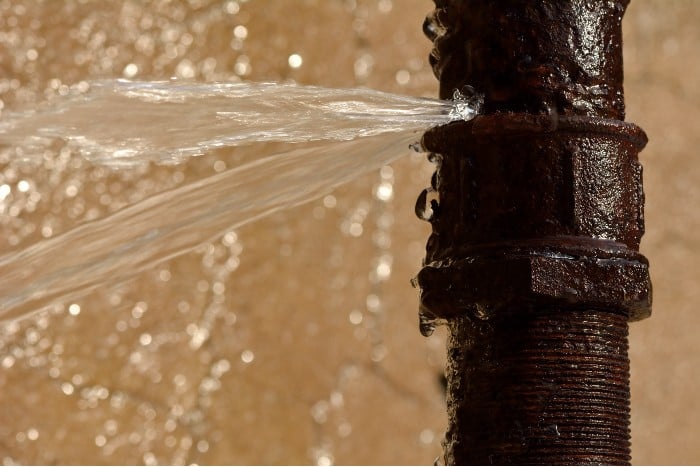6 Most Common Origins of Water Leaks in Your Home: How to Identify and Address Them
6 Most Common Origins of Water Leaks in Your Home: How to Identify and Address Them
Blog Article
How do you feel in regards to How to detect water leaks in your home?

Leaks not only create waste of water yet can additionally create unneeded damages to your residence as well as advertise undesirable organic growth. Regrettably, water leaks may go unnoticed because most of the pipework in our home is hidden. By looking and understanding for day-to-day scenarios that trigger leakages, you can secure your house from future leaks and also unneeded damage. Today, we will certainly check out six leakage triggers that may be causing your pipelines to leak.
Trespassing origins
A lot of water leaks start outside your house instead of inside it. If you notice a sudden decline in water stress, state in your faucet, take time to head out as well as analyze your yard. You could observe wet patches or sinkholes in your lawn, which might suggest that tree roots are attacking water lines creating water to leak out. You can have your plumber look for intrusion, particularly if you have trees or shrubs near your home.
Rusty water systems
As time goes by, your plumbing system ages and also corrosion such as rust might start eating away the pipes. This could be the cause of discoloration or warping on your pipes. This asks for an assessment with your plumber immediately. Take into consideration changing the pipelines given that they are at a greater danger of rust than the more recent designs if our plumbing system is old.
Faulty Pipe Joints
The point at which your pipes connect is frequently the weakest web link in the waterline. Pipe joints can degrade gradually, leading to water leaks. The bulk of pipeline joints are not quickly noticeable. If you have noisy pipes that make ticking or banging noises, particularly when the hot water is turned on, your pipeline joints are possibly under a lot of pressure. It is advisable to have your plumber check your system once a year.
Instantaneous temperature level adjustments.
Severe temperature changes in our pipelines can trigger them to expand and also acquire unexpectedly. This development and tightening may cause fractures in the pipes, specifically if the temperature level are below freezing.
Poor Water Connectors
Sometimes, a leakage can be triggered by loosened tubes and pipes that provide your home appliances. Typically, shifting is what creates the loosened water Connections. You may find when it comes to a cleaning maker, a hose might spring a leak because of drinking throughout the spin cycle. In case of a water links leakage, you might notice water running directly from the supply line or pools around your devices.
Clogged Drains
Obstructed drains pipes might be aggravating and inconveniencing, however they can occasionally wind up creating an overflow leading to rupture pipelines. Maintain getting rid of any materials that may decrease your drains pipes that could obstruct them to prevent such hassles.
All the above are reasons for leakages yet not all water leakages result from plumbing leakages; some leakages could originate from roof leakages. All leaks must be fixed instantly to prevent water damages.
Leakages not just create waste of water but can also trigger unneeded damage to your house as well as advertise undesirable natural development. By recognizing as well as looking for daily scenarios that create leakages, you can shield your home from future leaks and unnecessary damage. Today, we will look at six leak causes that may be triggering your pipes to leak.
At times, a leak can be caused by loose hoses and pipes that supply your appliances. In case of a water connections leak, you might see water running straight from the supply line or puddles around your devices.
How To Check For Water Leak In Your Home
How To Check for Leaks
The average household's leaks can account for nearly 10,000 gallons of water wasted every year and ten percent of homes have leaks that waste 90 gallons or more per day. Common types of leaks found in the home are worn toilet flappers, dripping faucets, and other leaking valves. These types of leaks are often easy to fix, requiring only a few tools and hardware that can pay for themselves in water savings. Fixing easily corrected household water leaks can save homeowners about 10 percent on their water bills.
To check for leaks in your home, you first need to determine whether you're wasting water and then identify the source of the leak. Here are some tips for finding leaks:
Take a look at your water usage during a colder month, such as January or February. If a family of four exceeds 12,000 gallons per month, there are serious leaks.
Check your water meter before and after a two-hour period when no water is being used. If the meter changes at all, you probably have a leak.
Identify toilet leaks by placing a drop of food coloring in the toilet tank. If any color shows up in the bowl after 10 minutes, you have a leak. (Be sure to flush immediately after the experiment to avoid staining the tank.)
Examine faucet gaskets and pipe fittings for any water on the outside of the pipe to check for surface leaks.
Undetected water leaks can happen without the home or business owner even realizing. If you suspect a water leak, but not able to find the source. It is time to contact a professional water leak detection service, The Leak Doctor.
How To Find a Water Leak In Your Home
https://www.leakdoctor.com/blog/How-To-Check-For-Water-Leak-In-Your-Home_AE197.html

As a fervent reader about How to detect water leaks in your home, I thought sharing that blog post was a good thing. If you appreciated our post plz remember to pass it around. Thank-you for taking the time to read it.
Click Here Report this page